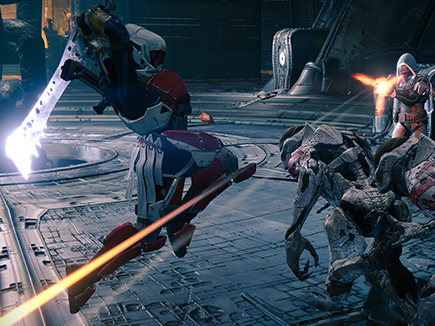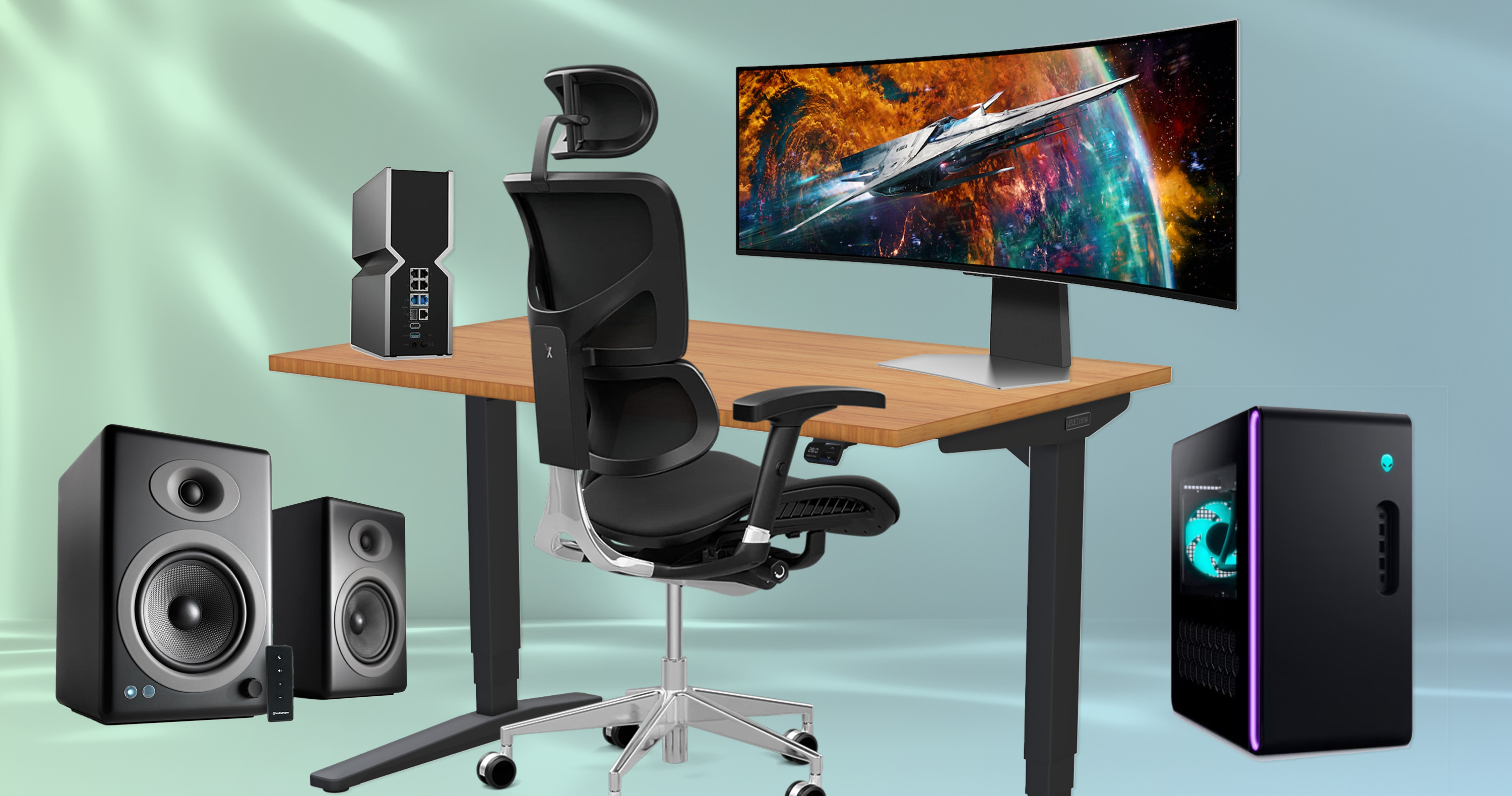Tom's Guide Verdict
Destiny is an ambitious and content-rich shooter that pushes the genre forward, but it lacks the quality storytelling that maker Bungie is known for.
Pros
- +
Tight, addictive gameplay
- +
Stellar visuals and audio
- +
Excellent competitive multiplayer
- +
Lots of content
Cons
- -
Hollow, lazy story
- -
Weak voice acting
- -
Repetitive missions
Why you can trust Tom's Guide
Destiny is the Han Solo of video games. It's incredibly handsome and knows a thing or two about shooting, but rarely wants to open its heart.
In this ambitious, always-online first-person shooter from Bungie, you'll explore beautiful interstellar environments that host some of the tightest FPS gameplay around. But with a cloudy story and uneven pacing, can this shooter truly "become legend" as its tagline suggests?
Guardian of The Galaxy
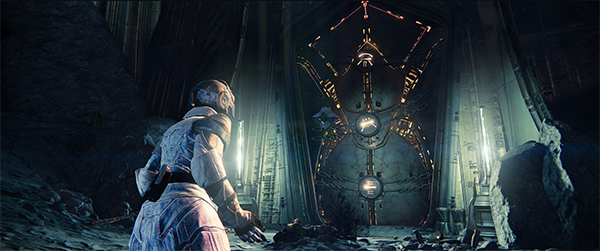
Destiny has an interesting premise and is set in beautifully crafted worlds, but the two aspects never combine to form an engaging story. In Bungie's futuristic take on the solar system, a spherical energy source called the Traveler brought about a "Golden Age" to Earth's neighboring planets, allowing humans to colonize and inhabit Mars and Venus.
Little did humans know that the Traveler had a follower. A mysterious darkness trailed behind the magical orb, turning the planets to which it once gave new life, including Earth, into war-torn shells of their former selves. With the solar system in ruins, your player character is brought back from the dead by a Ghost, an artificial intelligence that wields the last bit of the Traveler's power.
MORE: Top Gaming Keyboards
Given new life, you join the ranks of the Guardians: a group of soldiers determined to take back humanity's planets, wipe away the darkness and, well, kill a bunch of stuff for very vague reasons.
Destiny's biggest flaw is that its story mode has you do the same thing ad nauseam. Whether you're headed to Earth, the Moon, Venus or Mars, each mission starts with a quick pep talk from your Ghost, which behaves like R2D2 and speaks in the voice of Peter Dinklage, but has the charm of neither. The floating, ball-shaped Robo-Dinklage will briefly tell you whether you're about to slaughter the four-armed Fallen, the undead Hive, the robotic Vex or the colossal Cabal — and then the grind begins.
Get instant access to breaking news, the hottest reviews, great deals and helpful tips.
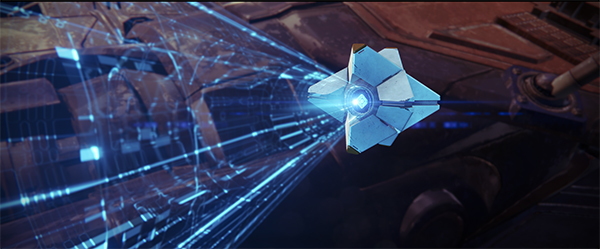
Each story sequence is structured almost identically: You enter a new area, have Robo-Dink scan an ancient artifact, fight seemingly endless waves of enemies and then head back to your ship. The sheer volume of things to kill makes the game highly mundane when playing solo, which is why I teamed up with friends whenever possible.
Don't have friends? Other Guardians will randomly pop into your game, providing some spontaneous moments of camaraderie. It's a nice touch.
Unfortunately, Bungie seems to have left behind the flair for cinematic drama that characterized the company's Halo games. Guardians' infrequent cutscenes consist of uninspired, generic voice acting (yes, even from Tyrion Lannister himself) that fail to add urgency to why you're bouncing from planet to planet in order to save Earth. The game is rife with boss fights, but, like the rest of Destiny's enemies, the voiceless big bads show up with zero fanfare and exist simply to be shot at.
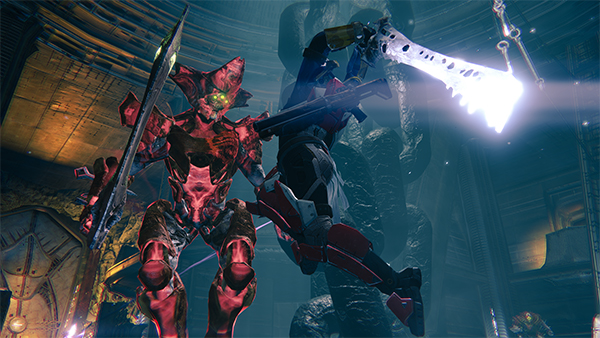
That's not to say that there aren't a few noteworthy story moments. I was genuinely spooked the first time a wave of ghastly Hive monsters came rushing out of total darkness, and I delighted in a moon mission that lets you put your gun down and wield an ancient sword. You can add greater context to these battles by unlocking digital "Grimoire cards" that provide extra lore via Bungie's app or website, but it shouldn't take all that extra work to make sense out of Destiny's bare narrative.
Combat Evolved
While Destiny's story doesn't reflect Bungie's renowned game-making chops, the immaculate combat certainly does. Running, gunning, sliding and jumping are a joy in Destiny, thanks to a tight control scheme that borrows the best parts of Halo and Call of Duty while adding RPG-like attacks and abilities.
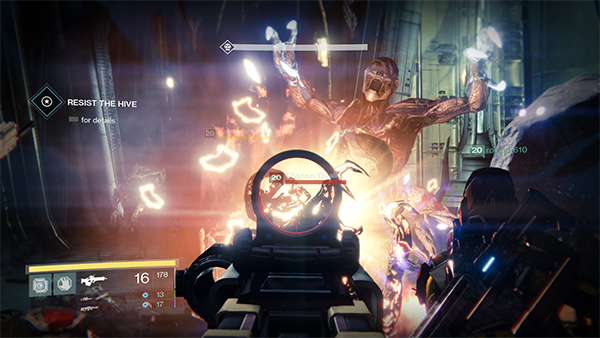
You'll wield a familiar array of auto rifles, pistols, shotguns and sniper rifles, as well as the standout Fusion Rifle, which charges up for a few seconds before firing a rapid energy burst that can down multiple baddies at once.
If shooting doesn't do the trick, there's always the melee attack. Bungie games have always made punching aliens in the face feel satisfying, and Destiny ups the ante by giving special properties to your haymaker, based on the character class you choose.
MORE: Best Gaming Mice
The icing on Destiny's gameplay cake is the super attack. Once charged, these special moves allow you to clear entire rooms of foes with your Guardian's class-specific power, whether you opt for the Titan's ground-pounding Fists of Havoc or the Hunter's one-shot-kill Golden Gun. I personally stick with my Warlock's Nova Bomb attack, and I still crack a huge grin every time I send a cluster of enemies flying with a huge ball of explosive light.
Playing Your Way
Fortunately, there's plenty to do in Destiny outside of its ho-hum story. Patrol mode has you freely explore one of the game's four main planets, taking on mini-missions as you see fit. These generic quests consist of little more than killing enemies and gathering resources, but I appreciated having the option to mindlessly wander without focusing on a strict goal.
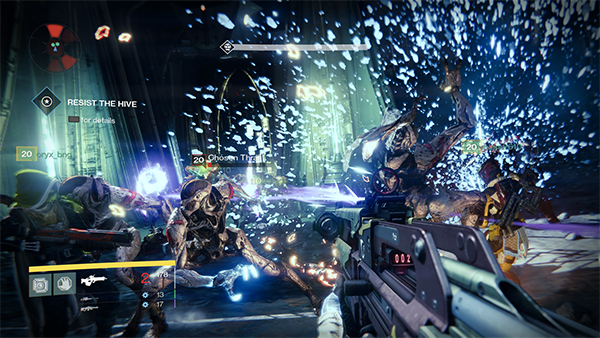
Some of Destiny's biggest challenges and shiniest rewards are packed into Strike mode, which has you and two teammates invade an enemy base and take down a towering boss. Strikes play out like bite-sized versions of a traditional MMO raid, and though the harder ones can take up to a few hours to conquer, the gear and experience points you gain in return are usually worth the effort.
While Strike is the best way to test your fireteam's skills against the game's AI, I kept coming back to Destiny's competitive Crucible mode. The game's refined gunplay is perfectly suited for player-vs.-player action, resulting in battles that combine Call of Duty's frenetic pace, Halo's floaty physics and Destiny's own tide-turning special attacks.
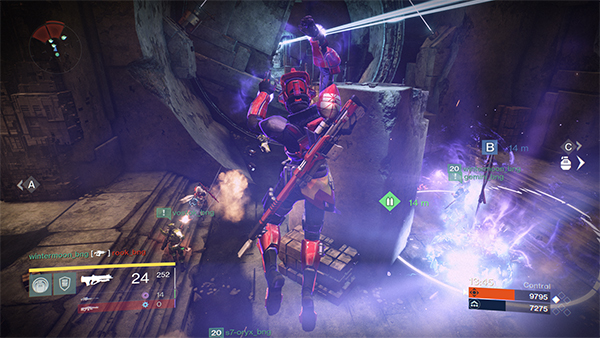
The Crucible's team deathmatch and territory-controlling game modes don't break much new ground for the genre, but the turrets and vehicles on each map combine with the game's unique character abilities to create some addictively elegant chaos. If you're an FPS purist, this is where you'll spend your time.
MORE: Our Favorite Gaming Desktops of the Year
Unifying Destiny's various game modes is the Tower, an MMO-like social space where you'll buy gear, collect bounties (challenges) and have dance-offs with your fellow Guardians. The visually stunning Tower provides a nice break from vaporizing inhumans, but, like the story mode, it's filled with cool-looking characters that I wish I could interact with more.
Growing your Guardian
No matter how you play Destiny, you'll be working toward two consistent goals: leveling up your character and finding cool gear. You get experience points for doing just about anything, and weapons and armor can be bought from merchants or randomly picked up from fallen enemies.
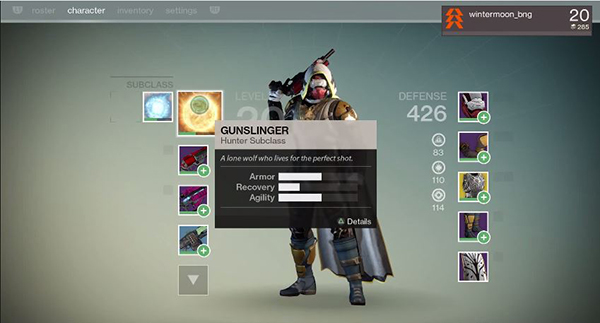
Your character stops leveling up in the traditional sense at level 20, but for many, that's where the real fun will begin. By raising your reputation during Vanguard (cooperative) and Crucible (competitive) challenges, you'll eventually be able to get your hands on armor items with a "light" value. Get enough "light," and you can actually raise your level past 20. Doing so is crucial for those who plan on sticking with the game long term, as Bungie is already rolling out limited-time challenges with level requirements upwards of 26.
Despite its flaws, I can look at and listen to Destiny all day.
In a quality that will be familiar to fans of MMOs or dungeon-crawling games, reaching Destiny's upper levels will require a good deal of repetitive action. This might deter some impatient players, but since all game modes reward you in some way, you at least have a lot of options when it comes to grinding it out.
A Beautiful World
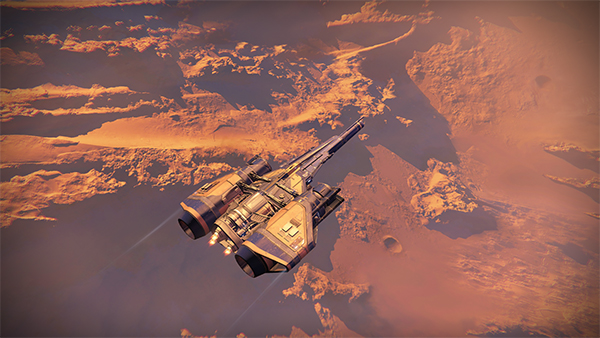
Despite its flaws, I can look at and listen to Destiny all day. It has the best user interface I've ever seen in a game, eschewing traditional up-down menus in favor of a beautifully responsive cursor-based system. Even doing nothing looks stunning; when you're between missions, your spaceship hovers over your most recently visited planet. Instead of being stuck behind a loading screen, you get to watch said ship beam into the atmosphere once you decide on an activity.
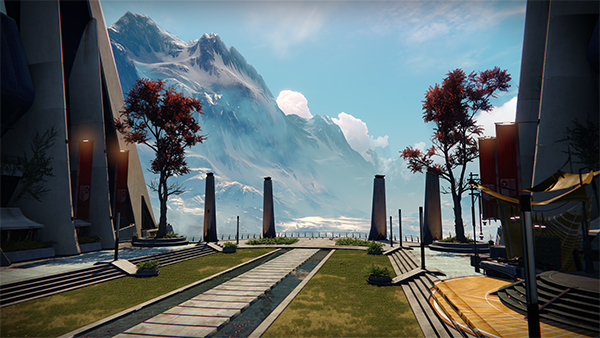
Then there are the gorgeous, gorgeous worlds themselves. Whether I touched down on Earth, the moon, Venus or Mars, there were few missions in which I didn't stop to take in the detailed foliage, the mystifying architecture or the moving asteroids floating in the nebulous skies above. From a run-down subway station on Mars to the lush jungles of Venus, Bungie did an excellent job convincing me that the fictional versions of these real-life planets were once colonized by humans.
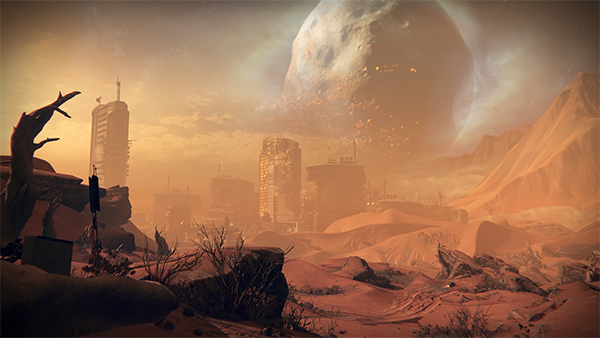
Scored by renowned Halo composer Marty O' Donnell (who recently departed Bungie), Destiny's soundtrack is just as arresting as its graphics. Ominous, orchestral hymns play out during more contemplative moments, and O' Donnell pulls out some appropriately pulsating strings and synths during the game's more climactic battles. It's a shame that Destiny's voice acting is so dull, because every other part of the game is an absolute treat to the ears.
Bottom Line
My journey through Destiny had moments that were dull and downright draining, but I never wanted to stop playing once it was time to put the controller down. The shared-world shooter fails to deliver memorable characters or a compelling narrative, but it makes up for it with gorgeously rendered worlds, varied game modes and some of the best FPS gameplay I've experienced this generation.
If you're looking for a blockbuster single-player experience in the vein of Call of Duty or Halo, Destiny isn't for you. However, if you're willing to stick with the multiplayer-minded, RPG-flavored shooter for the long haul, plenty of fun awaits you in Bungie's new universe.
Mike Andronico is Senior Writer at CNNUnderscored. He was formerly Managing Editor at Tom's Guide, where he wrote extensively on gaming, as well as running the show on the news front. When not at work, you can usually catch him playing Street Fighter, devouring Twitch streams and trying to convince people that Hawkeye is the best Avenger.
-
Tom Tancredi Reply14188930 said:Only if it was on PC.
Microsoft shutting down PC Game making
Top tiles ONLY Console made (Destiny, Last of Us, etc.)
AMD abandoning the FX line
Intel officially no longer make desktop motherboards
All equal the forced death to KVM PC players. And sadly the only 'answer' is an additional $500-1000 cost to a desktop system we hand build to get a 'Streambox' I mean steambox to 'pretend' we are playing on a PC Console.
Yeah PC Gaming has been abandoned.
